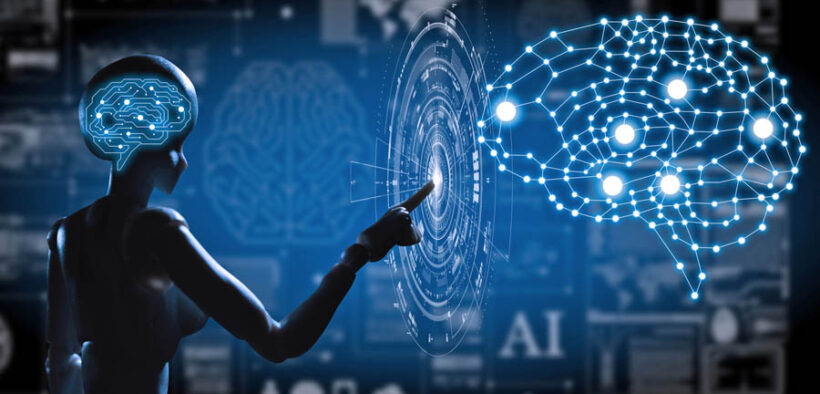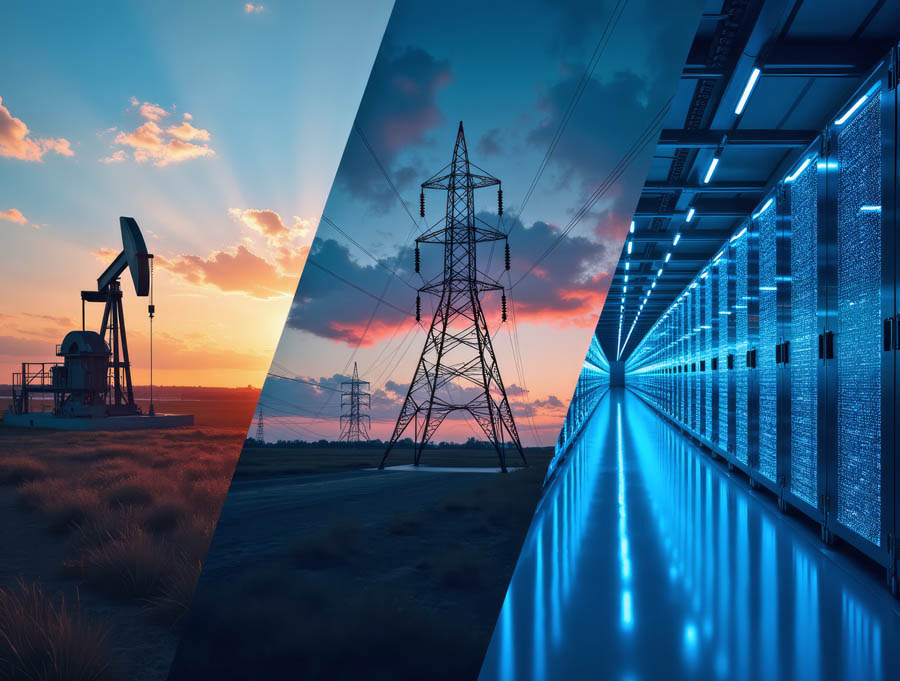Energy shortfalls block Puerto Rico tech growth

A growing energy shortfall is becoming a major barrier to technological advancement, threatening breakthroughs in artificial intelligence, robotics, quantum computing and other next-generation technologies and forcing tech companies and governments to think outside the box.
AI, for example, requires significant computational power. Training and running advanced AI models, especially those involving machine learning and deep learning, demand massive computing resources, including graphics processing units (GPUs) and specialized AI accelerators. This translates to substantial electricity consumption in data centers, according to the MIT Energy Initiative (MITEI).
Data centers consume huge amounts of electricity. AI increased global data center power consumption by 72% from 2019 to 2023, Bain & Company recently reported. In the U.S., data centers consumed more than 4% of the country’s total electricity in 2023, and by 2030 that fraction could rise to 9%, the Electric Power Research Institute reported. A single large data center can consume as much electricity as 50,000 homes.
By next year, rapidly growing AI demand in the U.S. will drive data center energy consumption to about 6% of the nation’s total electricity usage, adding further pressure on grid infrastructures and highlighting the urgent need for sustainable solutions, according to the Harvard Business Review (HBR).
During a TED Talk on the AI revolution in April, former Google CEO and Chairman Eric Schmidt highlighted the urgent need for energy, pointing out that the U.S. alone will need another 90 gigawatts of power, the equivalent of 90 nuclear plants.
“We’re building zero, right? How are we going to get all that power? This is a major, major national issue,” Schmidt said. “That’s problem number one — electricity and hardware.”
OpenAI CEO Sam Altman recently warned that “the cost of AI will converge to the cost of energy,” emphasizing that electricity — not hardware — will become the primary determinant of AI scalability.

Puerto Rico’s power grid cannot support next-gen tech, Héctor Jirau, executive director of Parallel 18, the business acceleration program of the Puerto Rico Science, Technology and Research Trust, told News is my Business.
“In Puerto Rico, we can barely set up a data center without it collapsing under energy costs, much less create and develop AI systems,” he said.
Energy and environmental costs of AI
Creating, developing, storing, transferring and using AI technology will boost greenhouse gas emissions, water scarcity and electronic waste, depleting natural resources and causing environmental degradation, according to multiple reports.
These environmental impacts are expected to escalate considerably, with the global AI energy demand projected to increase to at least 10 times the current level and exceed the annual electricity consumption of a small country like Belgium by 2026, HBR reported.
AI alone might fuel climate change, with indirect carbon dioxide emissions from data centers increasing by almost 80% over the course of this decade, according to the International Energy Agency.
The Federation of American Scientists (FAS) in June reported that Google’s carbon emissions have risen 48% over the past five years and Microsoft’s by 23.4%, largely due to cloud computing and AI.
Actual emissions frequently go unreported, FAS said, citing an analysis that found that Big Tech data centers may emit up to 662% more carbon dioxide than they publicly report.
Carbon accounting platform Arbor estimates that each ChatGPT query produces roughly 4.32 grams of CO₂e (carbon dioxide equivalent). One million queries is equivalent to 11,001 miles driven by an average gasoline-powered passenger vehicle, 4.3 acres of carbon absorbed by U.S. forests in one year and 349,258 smartphones charged. ChatGPT reportedly receives more than 2.5 billion queries a day.
AI data centers require massive cooling systems to maintain optimal operating temperatures. According to the World Economic Forum, the initial version of ChatGPT released in 2020 used about one 16-ounce bottle of water for every 10 to 50 responses it generated. Yale Environment 360 reports that each interactive AI query can indirectly consume half a liter of fresh water through data center cooling, contributing to millions of gallons used by AI servers.

A case for and against renewable energy
Dan Lammot, co-founder and CEO of threshold.world, said that some of the nonprofits and social impact organizations he works with worry about the carbon footprint of next-gen technologies like AI.
“Mission-oriented organizations are thinking layers deep into the stack. So, you saved a few hours using AI, but did you burn down a forest to make that work?” Lammot told News is my Business.
Consumers and businesses do not understand the environmental consequences of using these technologies, Lammot continued.
“Everyone does Google searches all the time, and there’s a consequence to a search. It uses energy, and that energy has to come from somewhere. A ChatGPT query carries a certain amount of weight and is consumptive to a certain level, but none of us, even those of us who are in it, know exactly how much,” he said.
“So, there are many limiting factors for people around the use of the technology, not just from the capital expenditure or investment side, but also whether the benefit outweighs the cost.”
Lammot believes the answer lies in renewable energy, but the road there is an uphill battle.
“We’ve known where we should be getting the energy for a long time, but people who have vested interests in not making a move toward renewable energy are powerful and well-resourced, and they will fight against those moves with everything they have,” he said.
“Many people have tried to make a much more rapid shift to renewable energy, but whether it’s politics or legacy vested interests, there are powerful forces that will stop that from happening,” he added. “Everything they do is for short-term gain. They’re not thinking long-term.”
While renewable energy offers a path toward sustainable next-gen tech, challenges related to intermittency, storage and grid integration would need to be overcome, according to multiple sources, including the World Economic Forum and Forbes.

Data centers need continuous power, but renewable energy production is not always consistent. Solar and wind are intermittent sources, meaning their output fluctuates with weather conditions. This variability is a challenge for data centers that require a constant, reliable power supply.
Large-scale energy storage solutions are needed to address intermittency, but these are very expensive and require a significant physical footprint. Integrating renewable energy projects into the existing power grid can also be complex and slow, according to the reports.
Semiconductors: tech’s backbone
Semiconductors are integral to next-generation technologies. A semiconductor is a material that has electrical conductivity between a conductor and an insulator, so it can conduct electricity under certain conditions but block it under others, acting as a partial conductor. This unique property makes them essential in electronic devices like computers and smartphones.
The World Semiconductor Trade Statistics (WSTS) organization projects semiconductor sales will reach $728 billion this year, an annual growth of 15.4%. According to Deloitte, semiconductor industry sales hit $627 billion in 2024, should reach $697 billion this year and hit $1 trillion by 2030.
In December 2024, representatives from local businesses, government agencies and universities met to discuss the possibility of manufacturing semiconductors in Puerto Rico. As of press time, it was unclear whether this group has continued to work on this effort.
A Google search on semiconductor companies in Puerto Rico produced three results: Semiconductor Components Industries Puerto Rico based in Arizona, Winchester Interconnect EC Corp in Caguas and Dot Works in Barceloneta. No further information was available, and efforts to contact the companies and the Puerto Rico Department of Economic Development and Commerce were unsuccessful.
In May, New Progressive Party Rep. Víctor Parés filed House Resolution 297, which calls for an investigation on the feasibility of establishing a center in Puerto Rico for semiconductor R&D. The House unanimously approved it on June 25.
The evolution of next-gen tech hinges on the evolution of semiconductors, “because that’s the bottleneck of what we call AI. There’s no way around that,” Parallel 18’s Jirau said.
“All tech innovations and trends depend on semiconductors. Every single one of them. All of it relies on one thing being right — semiconductor R&D. None of this works without semiconductors.”
But working with semiconductors in Puerto Rico would be extremely difficult because of the prohibitive cost of energy on the island and competitive inefficiencies. “Right now, it wouldn’t be feasible in Puerto Rico,” he said.
Jirau mentioned nuclear energy as an alternative. “Nuclear energy is the cleanest and most efficient energy source we have. You could run Puerto Rico on pennies with nuclear energy,” he said. “Unless we turn to nuclear energy, semiconductors are always going to be too expensive.”
The politics of semiconductors
Jirau noted that semiconductor R&D and manufacturing is tangled in geopolitical interests, macroeconomic considerations and national security concerns.
“Most of the manufacturing of semiconductors happens in Taiwan, and the situation between China and Taiwan is a huge national security issue. That’s why Nvidia, Apple, Intel, Microsoft — all of them — are in constant talks with the (U.S.) administration, because they know this is a national security concern,” Jirau said two weeks before the Intel-Trump deal was announced.
The U.S. reportedly is investing in the domestic semiconductor business to reduce reliance on foreign chip manufacturing, bolster national security, promote economic competitiveness and secure a leading position in future technologies like AI and quantum computing.




